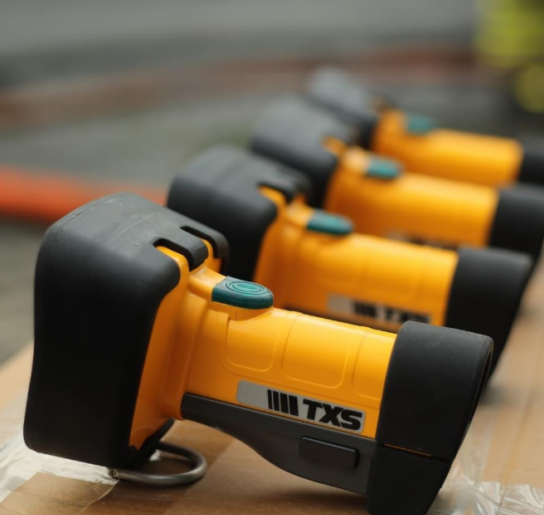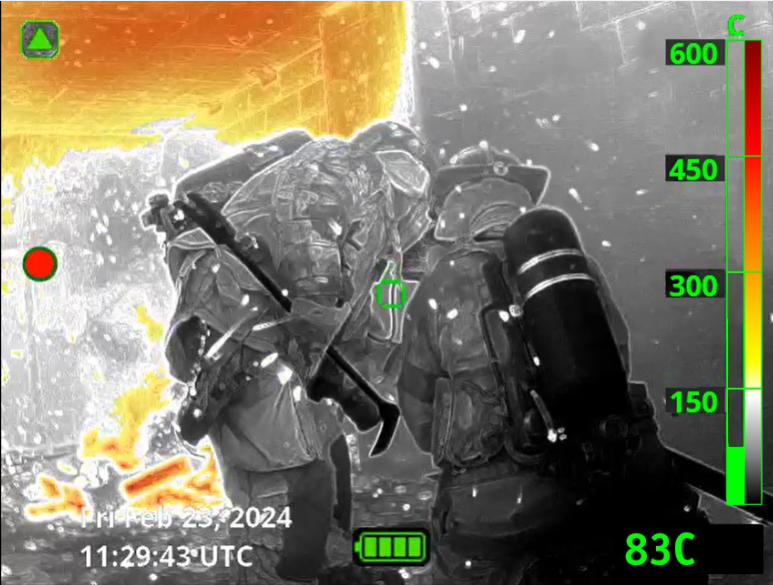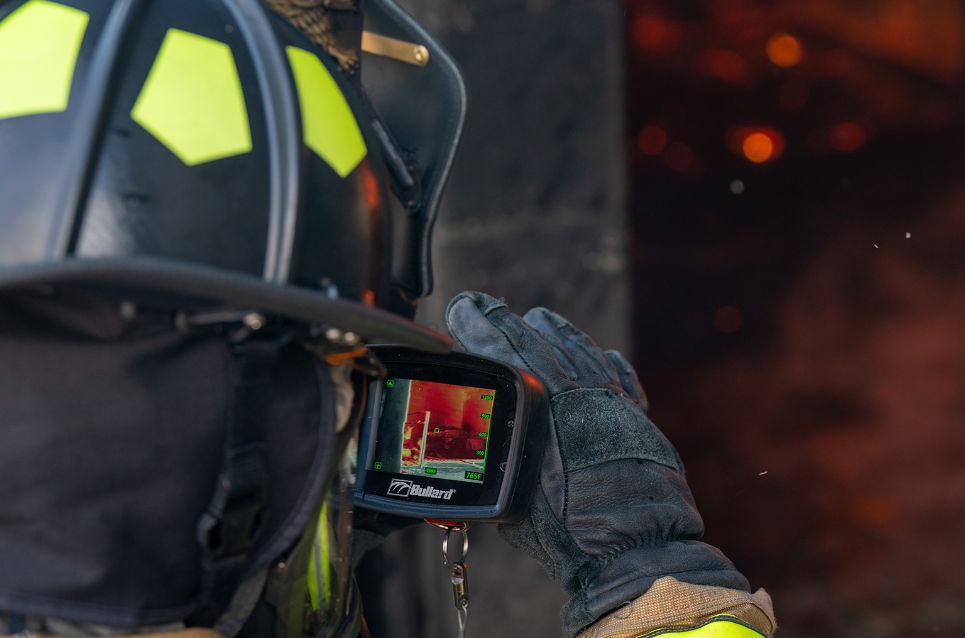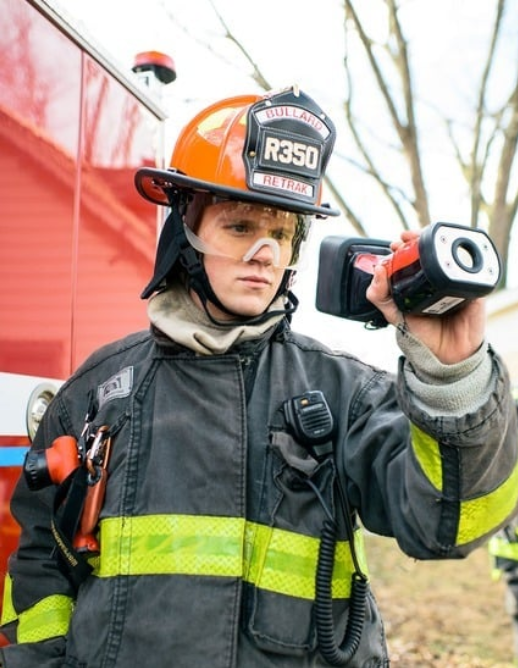Thermal imagers are essential tools for firefighters, offering critical visibility in smoke-filled or low-visibility environments. Selecting the right design can make a significant difference in safety, efficiency, and overall effectiveness. Among the three primary options—handle-equipped, handheld, and hands-free (integrated)—firefighters must weigh the advantages and limitations of each to determine the best fit for their needs. Here’s a closer look at each design, the scenarios where they shine, and why handheld imagers often rise to the top.
The Three Thermal Imager Designs
1. Handle-Equipped Thermal Imagers
Handle-equipped imagers are sometimes chosen for their stability and durability. Their larger frames provide the option for a secure grip. However, this bulk can become a challenge in dynamic firefighting scenarios, such as maneuvering through narrow staircases or confined spaces. Additionally, carrying a large handle-equipped imager alongside other essential tools can add to physical strain.
Where They Shine:
- Typically durable for rough handling.
- Scenarios where stability is critical, such as assessing structural integrity.
Challenges:
- Bulkier size and added weight can hinder agility.
- Less practical for rapid deployment or use in tight spaces.
2. Hands-Free (Integrated) Thermal Imagers
Hands-free imagers, built into helmets or SCBA gear, can provide convenience. These imagers allow firefighters to keep their hands free for other tools, making them particularly useful for quick initial size-ups. However, their integration limits flexibility; the display size and field of view may not meet the demands of detailed inspections. Over time, the fixed position of hands-free imagers can also cause discomfort or strain, especially during extended operations.
Where They Shine:
- Quick access during size-ups or search-and-rescue operations.
- Situations where firefighters need to operate tools simultaneously.
Challenges:
- Limited display size and fixed field of view may compromise detail visibility.
- Can become uncomfortable during long incidents or require frequent adjustments.
3. Handheld Thermal Imagers
Handheld thermal imagers balance portability, advanced features, and usability, making them a versatile option for most firefighting scenarios. Their compact design allows firefighters to navigate tight spaces easily, while advanced features like larger displays and superior imaging sensors help ensure clarity in high-pressure situations. Handheld devices are also ergonomically designed to reduce strain, even during extended use. While some ultra-compact models may sacrifice usability, a well-designed handheld imager offers the perfect combination of agility and functionality.
Where They Shine:
- Detailed inspections, such as identifying hot spots in overhaul.
- Navigating tight spaces where maneuverability is key.
- Prolonged operations that require ergonomic handling.
- When clipped to gear, the imager rests naturally against the firefighter to maintain a balanced and low profile position.
Challenges:
- Design requires firefighters to dedicate one hand to hold the device.
- Some overly compact designs may compromise screen size or usability.

Connecting Design to Real-World Scenarios
Let’s consider a few examples:
- Navigating a Narrow Staircase:
A handle-equipped imager might provide stability but could slow down maneuvering in confined spaces. Hands-free imagers offer convenience but may limit visibility. A handheld imager allows for precise navigation and clear thermal imaging without restricting movement.
- Search-and-Rescue in Dense Smoke:
Hands-free imagers excel in situations requiring immediate access, allowing firefighters to assess the scene while handling tools. However, for tasks requiring detailed visualization, such as locating victims or hot spots, handheld imagers offer superior clarity and flexibility.
- Prolonged Overhaul Operations:
Handle-equipped imagers may be useful for stability during long inspections, but their weight can increase fatigue. Handheld imagers provide the same advanced imaging capabilities with greater comfort and usability over extended periods.

What to Look for in a Handheld Imager
When choosing a handheld thermal imager, prioritize these features:
- Clear, Large Display: Can help ensure visibility of critical details in dynamic environments.
- Glove-Friendly Controls: Seamless operation without removing gloves.
- Ergonomic Design: A natural fit to reduce fatigue during extended use.
- Rugged Durability: Built to withstand drops, heat, and the demanding conditions of firefighting.
Want to learn more about handheld thermal imagers? Visit Bullard’s website here.

Conclusion: Which Design Fits Your Team?
Each thermal imager design has strengths tailored to specific scenarios. Handle-equipped imagers provide stability for detailed inspections but are less practical for dynamic situations. Hands-free imagers excel in convenience but may lack the versatility required for in-depth work. Handheld thermal imagers offer a strong overall balance, delivering advanced features, portability, and usability in a single package.
As you assess your department’s needs, consider the environments you’ll face, the demands of your operations, and the comfort of your team. Which design will give your firefighters the confidence to perform their best in the toughest conditions?



